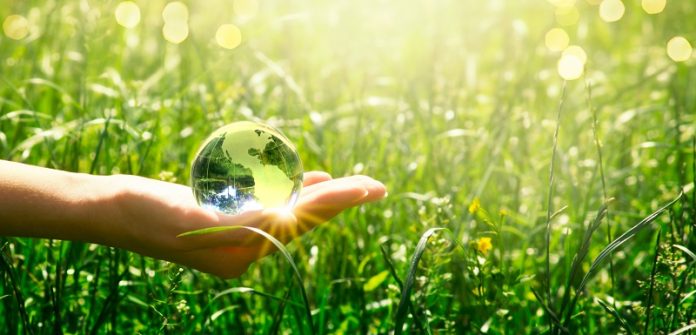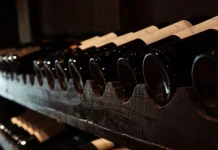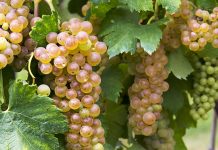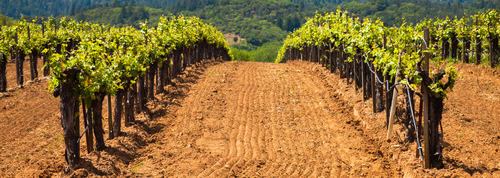If there is one trend that is currently gaining momentum in the wine world, it is organic wine. Moreover, the multiple labels show that the industry is taking into consideration a healthier agriculture. Chemical inputs, which have been particularly debated in recent years, are gradually being excluded.
These labels have become over time a marketing argument that could even be considered as unavoidable. However, being labeled organic is not a simple task. And all vineyards, whether they are managed by large groups with massive means or not, are not on an equal level.
Climate: a key factor
Depending on the location of the vineyard, it may be easier to comply with the conditions of the organic agriculture specifications. For this, a warm and dry climate is ideal. This is the case, for example, in the Languedoc region, which has a very high proportion of organic wines. In the driest parts of the Rhone Valley, this is also the case, such as Château Gigognan which is exposed to the powerful Mistral wind. On the other hand, for a region with a hot and humid climate, such as Bordeaux, things will quickly get complicated.

The challenge for organic wine
Indeed, the regions are not on an equal level. For those whose weather conditions are not appropriate will have to deal with particularly strong pressures of what is called cryptogamic diseases. In other words, fungi. These fungi thrive in heat and humidity. In a climate that is conducive to them, the “pressure” can quickly become very strong, and it then becomes vital to preserve the crop, to fight against the development of these fungi. However, in organic agriculture, the list of products used is considerably reduced, making it more difficult to fight effectively. The interventions in the vineyards will follow one another for a result which can be, in certain cases, very limited.
The consequence can be the loss of a large part of the harvest. This was the case for some great Bordeaux estates in 2018 with more than 80% losses, such as Chateau Palmer, Margaux appellation, and Chateau Pontet Canet, Pauillac appellation, both biodynamic. The Bordeaux region has indeed an important rainfall with a temperate to hot climate.
The further south you go and the less it rains, the easier it is!
To summarize, the warmer the region with limited rainfall, the easier it becomes to follow organic wine standards. This is particularly noticeable in Italy. Indeed, the south has four times the percentage of organic wineries than the center, and 15 times more than the north. Large estates are taking the step to convert, such as Caiarossa in Tuscany.
Chile also has many organic vineyards, including some of the most iconic such as Casa Lapostolle, in the Colchagua Valley, with the famous Clos Apalta which is biodynamically managed. And this trend is increasing all over the world.

Accepting the risk of climatic hazards, a real challenge
If the winemaker is used to dealing with the weather, this gymnastics can be more delicate for those who expect a return on investment. The pressure of results in certain groups or domains is such that one cannot take the risk of converting if the risk is too high. There are jobs to be kept, markets to be maintained, profitability to be obtained… this can be understood.
The risks must therefore have been thought out beforehand, even if a temporary break is always possible when one is organic in case of a hard blow. You can start using other products but you will not be able to claim the label anymore. You will have to wait for a period of 2 to 3 years to be labeled organic again.
How much does it cost to go organic?
Of course going organic requires a budget. First of all, there is the cost of the labels. Then there is the cost of labor. This one will increase significantly, because it requires more presence. Depending on the country, the region, or the year, this cost can even explode between the labor, and the pressure of diseases during that year.
Spain, the most important producer of organic wine, is not so by chance. Indeed, most of its climate is favorable to this type of viticulture, with an available and cheap labor force.
However, it is important not to forget that savings will be made on the purchase of phytosanitary products. And these products can be extremely expensive. From 1000 euros per hectare approximately in conventional agriculture, prices can go down to 200 euros in organic farming, sulfur and copper being extremely cheap. A point to be put into perspective however, because more manpower can also mean having to invest in a greater quantity of equipment.
Motivations to go organic
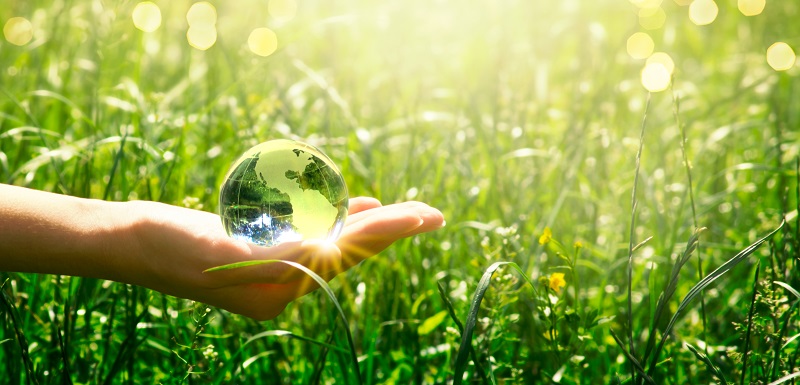
Some have adopted these practices almost intuitively and communicate more or less on the subject. Others follow the current trend which shows a clear interest and which can open new markets. There are also economic motivations, as organic farming is currently gaining in value. It adds a string to its bow, it is a fact. But above all there are ethical convictions, to respect the soil, to be as close as possible to nature, to the vines. Generally speaking, this conviction can be seen quite easily in the owners’ statements. Gonzague and Pierre Lurton own nearly 140 hectares of biodynamic vineyards in the Pauillac and Margaux appellations. And it is clearly not an economic motivation that prevails. They are intimately convinced that biodynamics is the way.
Major risks for organic wine
The main risks are going to be losing all or a significant part of the crop. Yields can be impacted very significantly, which means little volume. In the case of deals that have been concluded and must be supplied, this can be particularly problematic.
But some practices authorized by the certifications can also raise questions and debates. Like the fact of having to treat the vines a considerable number of times with copper sulfate. This treatment is authorized, but divides around its impact in certain soils. We are talking about soils saturated with copper residues, some soils being less draining than others, and depending on other factors.
Whatever the case, there will always be room for improvement, regardless of the certification!
Convince
If one can be convinced, one must also know how to convince. And this exercise can be very difficult for the director of a domain who must report to his shareholders.
Thomas Duroux, director of Chateau Palmer, has succeeded in converting the 75 shareholders of the property to biodynamic farming by displaying all his conviction. He has been raising awareness of the need for a grand cru to adopt practices closer to nature since 2014.

Switch to organic wine!
To be organic is to be in phase with the current awareness, where, just as we like to know what we have in our plates, we want to be certain of what we have in our glasses.
It is also an additional selling point, and it can open up new markets, such as the whole sector of specialized organic distribution. This commitment is linked to the constant search for quality improvement. And if the conditions are favourable, the wineries who wish to evolve should seriously consider this possibility of conversion.

